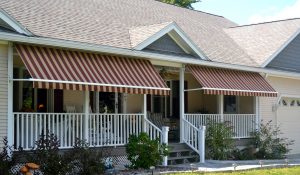What to look for with commercial awnings?
Shades arrive in an assortment of shapes, edges, sizes, and textures. Their contemporary use goes back to the mid nineteenth century, however early canopies can be found as far back as the old Roman and Egyptian culture. Do the trick it to state, Awnings and the innovation behind them, have changed impressively from their straightforward utilitarian congregations in the past to the exceptionally their profoundly tweaked state today. Here’s a more critical gander at the ‘at that point and now’ of canopies in America.

A snappy look at a business canopy embellishing the structures and strip shopping centers in your nearby neighborhood and you would not ponder the manner in which an awning is collected or fabricated. In any case, a more intensive gander at the historical backdrop of shades uncovers that the basic utilitarian extended canvas gatherings that establish mid nineteenth century canopies have seen a colossal change in the course of the last not many hundred years. Awnings of the mid nineteenth century were for the most part static structures, which not just asked for the check request of people on foot going for a walk in the nearby neighborhood, yet in addition took into account window shopping in a wide range of climate conditions. In spite of the fact that these basic shades were both engaging and utilitarian, their downside was the fixed edge, which made shutting shop a bulky assignment as covers should have been pulled from the casing and moved by hand. Luckily, collapsing arm tende da sole brescia were presented in the late nineteenth century and, in contrast to their steadfast cousins, these shades had vertical pivots, which crossed like scissors and made a simple method to withdraw the canopy, contingent on the climate state of the day.
During this period, canvas duck, because of its moderateness and boundless creation, was the normal texture utilized on business Awnings, and kept on being so until the principal half of the twentieth century. Be that as it may, for every one of its advantages, convenience, and utility, canvas duck was vulnerable to over extending and tearing, blurring, mold development, and even cigarette flashes, which were likewise definitely more typical than today. In this manner, the materials’ downsides drove awning creators to scan for texture options. It was not until after World War II those canopies were given a vinyl, waterproof plastic covering that forestall
In the post-War years, vinyl gums, acrylic strands, and polyester materials were utilized notwithstanding fundamental vinyl to guarantee a canopy’s expanded life span and strength. In any case, as even these valuable changes were occurring, new patterns were quickly rising, undermining their ubiquity and their opportunity to upset an industry. Rather, more up to date styles saw a move in the direction of progressively solid aluminum Awnings, just as a general change in the design.